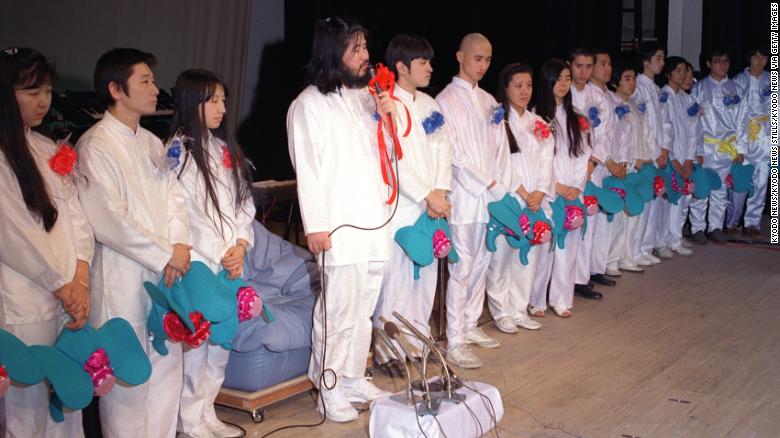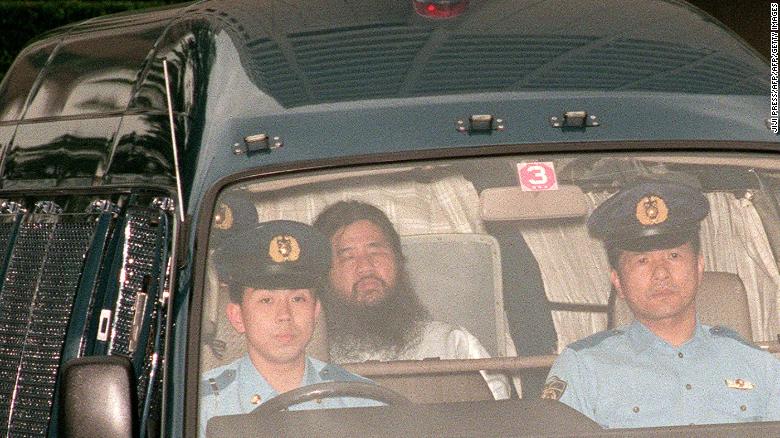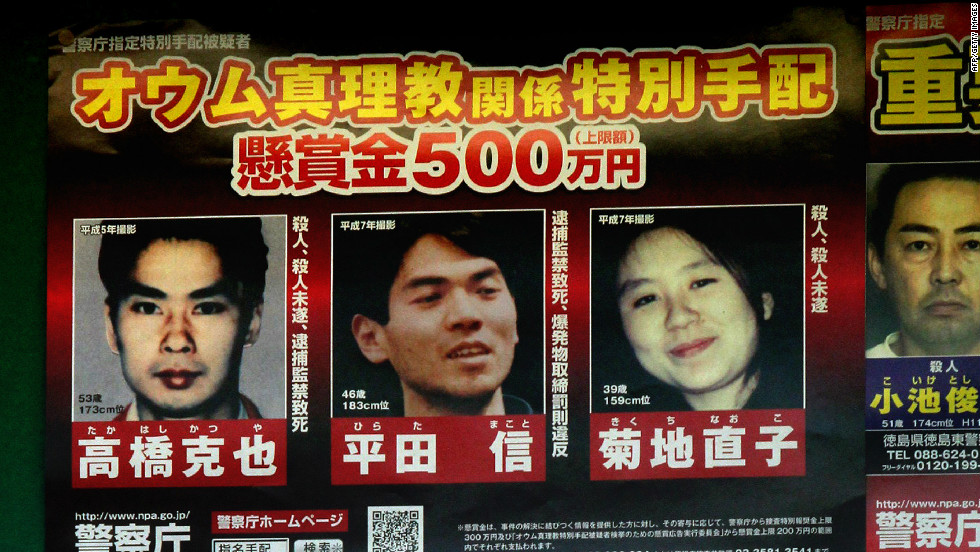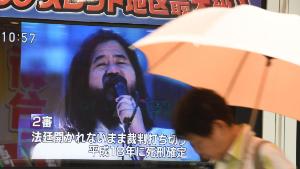Remaining members of Japan's doomsday cult executed
Tokyo (CNN)Six members of a Japanese doomsday cult held responsible for the deaths of dozens of people have been executed, according to Japan's justice minister.
The group's leader Shoko Asahara -- real name Chizuo Matsumoto -- was executed earlier in July, along with six other members of the cult, which was responsible for a sarin gas attack on a Tokyo subway in 1995.
Other members of Aum Shinrikyo who had been sentenced to death were hanged Thursday morning, Justice Minister Yoko Kawakami told reporters.
The Tokyo attack was part of a murder spree throughout the country that left 29 people dead. The subway attack itself killed 13 people and injured more than 6,000 others.
Kawakami said that the "extremely heinous" crimes of the cult had been "carefully organized and planned," and that attacks of this magnitude "should never happen again."
Called the attack "indiscriminate terrorism against the public that shocked the world," she said it "shook society with fear, (that) a chemical weapon like sarin was used."
One of those executed Thursday, Kazuaki Okazaki, was one of the first people to join the cult and was instrumental in growing the group's membership. He was implicated in some of the group's earliest killings -- of a lawyer and his family, as well as a follower who tried to leave the cult in 1989.
Another cult member, Yasuo Hayashi, was directly involved in the Tokyo sarin gas attack and other attacks in central Japan, according to state broadcaster NHK.

Aum Shinrikyo cult members, alongside group founder Shoko Asahara (4th from L), speak at a press conference in Tokyo to announce a plan to field candidates for the general election in this photo taken in January 1990.
Three other Aum followers executed -- Masato Yokoyama, Toru Toyoda and Kenichi Hirose -- were also involved in the Tokyo attack, another sarin attack in central Japan and other murders committed by the group, as well as the production of weapons and deadly chemicals.
Satoru Hashimoto was implicated in at least ten murders committed by the group, including the lawyer and his family, as well as the central Japan gas attack.
Asahara's death sentence was finalized in 2006, according to public broadcaster NHK, but trials of his co-conspirators dragged on for a further 12 years. The last appeals were exhausted in early 2018, paving the way for the executions of the cult leader and his followers.
Executions in Japan are done in secret, with no advance warning given to the prisoner, their family or legal representatives, according to Amnesty International. Prisoners often only learn hours before that they are to be killed.
In two terms as justice minister, starting in 2014, Kawakami has recommended the death penalty for 16 people, including the 13 Aum Shinrikyo members. Following the most recent hangings, there are 110 inmates on death row, 88 of whom are applying for retrial.
At Thursday's press conference, Kawakami said that she had "ordered the executions after repeated prudent reviews."
She said that her government had studied anti-capital punishment arguments, but that a country's system of punishment should be based on public sentiment.
She said that Japanese public opinion accepted the death penalty for crimes of this magnitude, and that the elimination of the practice would not appropriate in Japan.

Shoko Asahara, head of the doomsday cult Aum Shinrikyo, is transferred from Tokyo police headquarters to Tokyo District Court for questioning in July 1995.
Doomsday beliefs
Asahara founded Aum Shinrikyo in 1984 and quickly attracted thousands of disciples, combining forecasts of a coming apocalypse -- which would come after the US attacked Japan, turning it into a nuclear wasteland -- with traditional religious teachings and new age tactics.
Many of Asahara's followers were highly educated scientists and engineers, who helped bring in huge amounts of money to the cult's coffers.
As the cult grew, the families of members began to raise the alarm, and complaints of brainwashing and abuse within Aum Shinrikyo became more common.
Despite this, few would have predicted what was to come, and the cult shot to global notoriety with the March 1995 attack on the Tokyo subway, when members of Aum Shinrikyo released sarin gas on carriages full of commuters during rush hour. The attack killed 13 people and injured 5,500.
Asahara and dozens of his followers were arrested in the months that followed, after police raids across the country.

A policeman passes before pictures of suspected former members of Japan's Aum Supreme Truth doomsday cult, including Makoto Hirata who was arrested in Tokyo on January 1, 2012 after almost 17 years on the run.
2012: Doomsday cult member surrenders to police in Japan
News Courtesy: www.cnn.com











